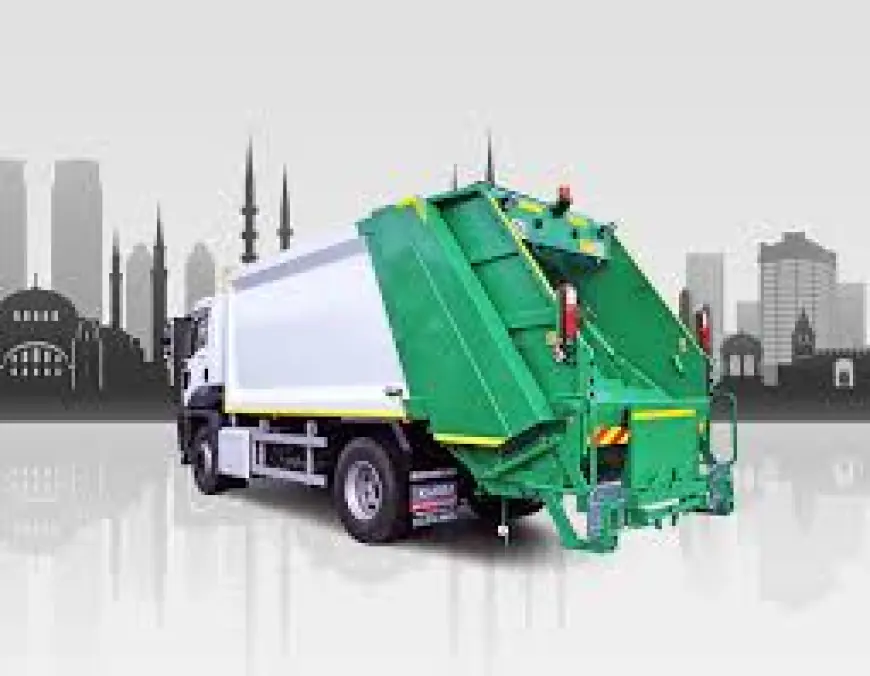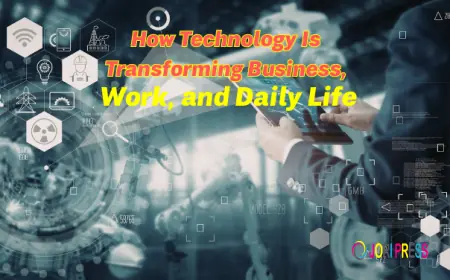Electric Vehicles in Garbage Collection Vehicle Market 2030
Compact, maneuverable trucks are being developed for cities with narrow streets, while automated systems like side loaders enhance safety and efficiency.

The global garbage collection vehicle market is undergoing a transformative evolution, driven by rapid urbanization, heightened environmental awareness, and a rising need for efficient municipal waste management systems. As cities expand and populations grow, the demand for smarter, more sustainable, and technologically advanced waste collection solutions has never been greater.
According to recent insights, the market was valued at USD 13.93 billion in 2024 and is projected to reach USD 19.41 billion by 2030, growing at a compound annual growth rate (CAGR) of 5.74% during the forecast period. This growth is propelled by innovations in smart technology, regulatory support for green alternatives, and increased investments in urban infrastructure and cleanliness.
Emerging Trends Shaping the Garbage Collection Vehicle Market
1. Integration of Smart Technologies
A major transformation is occurring with the integration of Internet of Things (IoT), Artificial Intelligence (AI), and GPS-based technologies in garbage collection vehicles. These advancements are enabling waste management companies to streamline operations, reduce costs, and improve service efficiency. Real-time monitoring, route optimization, and load tracking are reshaping operational strategies.
2. Electrification of Waste Collection Fleets
Governments across the globe are focusing on reducing greenhouse gas emissions, leading to the growing adoption of electric and hybrid garbage trucks. These vehicles significantly reduce environmental impact while offering comparable performance to traditional diesel-powered counterparts. Several cities have initiated fleet transitions to achieve carbon neutrality goals.
3. Modular and Customizable Vehicle Designs
To accommodate the diverse requirements of both densely populated urban regions and remote rural areas, manufacturers are introducing modular and compact vehicle designs. These designs offer flexibility, allow for easier maneuverability, and can be customized based on the size of the collection area, type of waste, or loading style required.
4. Autonomous Garbage Trucks
Autonomous or semi-autonomous garbage collection vehicles, though still in experimental stages, are emerging as a potential game-changer in the market. Backed by sensors, AI, and robotic arms, these vehicles promise to revolutionize waste collection by minimizing human error, improving safety, and maximizing efficiency.
5. AI-Driven Waste Segregation
Advanced vehicles are being equipped with AI-powered waste detection and segregation systems that can categorize recyclable materials and general waste, automating part of the sorting process. This innovation supports cities in achieving higher recycling rates and complying with sustainability standards.
Download Free Sample Report: https://www.techsciresearch.com/sample-report.aspx?cid=21172
Market Drivers
1. Rapid Urbanization
As global urbanization accelerates, cities are generating increasing amounts of municipal solid waste. This spike in waste volume is placing unprecedented pressure on local governments to enhance waste collection capabilities, thus driving the demand for efficient garbage collection vehicles.
2. Regulatory Push for Green Technologies
Government regulations across regions are prioritizing emissions reduction, sustainable waste disposal practices, and vehicle electrification. Incentives, grants, and mandates are encouraging municipalities and private firms to invest in eco-friendly, fuel-efficient, and low-emission garbage trucks.
3. Technological Innovation in Waste Handling
Ongoing innovations in hydraulics, automation, telematics, and waste compacting mechanisms are increasing the appeal and performance of modern garbage collection vehicles. These technologies reduce labor requirements, enhance productivity, and improve safety for sanitation workers.
4. Increased Awareness of Public Health and Sanitation
Post-pandemic shifts in hygiene awareness have significantly emphasized the importance of timely and efficient waste collection. Clean urban environments are now tied closely to public health, motivating municipalities to prioritize modern waste management solutions.
Industry Key Highlights
- The semi-automatic technology segment is the fastest-growing due to its balance of automation and human oversight. These vehicles offer operational flexibility, cost-effectiveness, and reliability, making them ideal for diverse waste collection scenarios.
- North America stands out as the fastest-growing region, owing to strong infrastructure, advanced technology adoption, and supportive regulatory frameworks promoting smart waste solutions.
- Electric garbage trucks are gaining significant momentum as a result of government subsidies and growing environmental concerns. More manufacturers are prioritizing battery-electric and hybrid vehicle development.
- There is a growing demand for compact and high-capacity vehicles designed for urban environments with narrow streets, contributing to innovations in vehicle design and efficiency.
- Smart route optimization using AI and GPS tools is becoming a standard requirement, enabling operators to reduce fuel usage, time, and overall operational costs.
Market Segmentation
By Loader Type
- Front Loaders: Typically used for commercial waste collection; offer fast loading and compacting abilities.
- Rear Loaders: Common in residential areas; favored for their ease of access and manual load capabilities.
- Automated Side Loaders: Used where driver-side operations are required; enable one-person operation, reducing labor costs.
- Others: Includes specialized vehicles for recycling and hazardous waste.
By Technology
- Manual
- Semi-Automatic (Fastest-growing segment due to cost-efficiency and adaptability)
By Vehicle Type
- Light Duty
- Medium Duty
- Heavy Duty (High demand in urban municipal services and industrial waste handling)
By Region
- North America (Fastest-growing)
- Europe
- Asia-Pacific
- South America
- Middle East & Africa
Competitive Analysis
The global garbage collection vehicle market is characterized by consolidation and competition among established OEMs and specialized vehicle manufacturers. Industry players are investing in product innovation, geographic expansion, partnerships with municipal governments, and green technology to gain competitive advantages.
Key Players Include:
- AB Volvo – A leader in heavy-duty electric garbage trucks and smart waste collection systems.
- Dennis Eagle Limited – Known for innovative vehicle designs and urban waste solutions.
- IVECO S.p.A. – Expanding its footprint in Europe and Asia with fuel-efficient waste trucks.
- Dulevo International S.p.A. – Focused on compact sweepers and specialized waste vehicles.
- FAUN Umwelttechnik GmbH & Co. KG – Recognized for modular garbage trucks with sustainability features.
- Hino Motors, Ltd. – Investing in electric and hybrid truck development.
- PACCAR Inc. – Strong presence in North America with diverse garbage truck offerings.
- Mack Trucks, Inc. – Leading in durable, high-capacity heavy-duty collection vehicles.
- Daimler Truck North America LLC – Promoting zero-emission solutions for waste management.
- International Motors, LLC – Emphasizing cost-effective vehicles for developing markets.
These companies are leveraging technology partnerships, innovation in drivetrains, and smart features to meet the evolving demands of waste management authorities globally.
Future Outlook
The garbage collection vehicle market is on the brink of significant transformation, moving toward automation, sustainability, and digital connectivity. The next decade will witness a surge in electric vehicle adoption, expansion of AI-based waste sorting technologies, and greater urban mobility innovations tailored to public health and climate goals.
- Electric garbage vehicles will likely dominate procurement contracts in environmentally conscious regions by 2030.
- Smart waste collection systems, powered by AI and IoT, will become an integral part of urban planning.
- Public-private partnerships (PPP) are expected to rise as municipalities outsource waste management responsibilities.
- Regions in Asia-Pacific and Africa are expected to emerge as key markets due to infrastructure modernization and government push for cleaner cities.
- Circular economy goals will redefine garbage collection vehicles to not only collect but contribute to waste-to-energy and recycling efforts.
10 Benefits of the Research Report
- Comprehensive Market Analysis – Offers a detailed overview of the market by segment, technology, region, and loader type.
- Data-Driven Forecasts – Provides credible projections from 2024 to 2030, aiding in long-term planning.
- Identification of Growth Drivers – Pinpoints key factors propelling market expansion globally.
- Competitive Landscape Insights – Profiles major players and outlines strategic developments.
- Emerging Technology Trends – Explores new innovations like electric, hybrid, and autonomous vehicles.
- Policy and Regulation Mapping – Highlights government initiatives shaping market growth.
- Regional Performance Evaluation – Details high-growth areas and investment opportunities by geography.
- Investor Intelligence – Assists stakeholders in assessing the commercial viability of market entry.
- SWOT and Market Challenges – Discusses risks, constraints, and opportunities in the evolving landscape.
- Customization Options – Enables users to request tailored analysis to suit specific business goals.
Conclusion
The global garbage collection vehicle market is no longer limited to traditional waste-hauling operations—it is now at the forefront of urban sustainability, digital transformation, and public health strategy. With smart cities becoming a global norm, and regulatory frameworks emphasizing cleaner air and greener infrastructure, garbage collection vehicles are being reimagined not just as tools of sanitation but as drivers of systemic environmental change.
Industry stakeholders must embrace this transition by investing in next-generation vehicle technologies, public-private collaboration, and sustainable operational practices. Those who adapt quickly will be well-positioned to capitalize on the growing demand and lead the charge toward a cleaner, smarter future.
Contact Us-
Mr. Ken Mathews
708 Third Avenue,
Manhattan, NY,
New York – 10017
Tel: +1-646-360-1656
Email: [email protected]
Website: www.techsciresearch.com
What's Your Reaction?
 Like
0
Like
0
 Dislike
0
Dislike
0
 Love
0
Love
0
 Funny
0
Funny
0
 Angry
0
Angry
0
 Sad
0
Sad
0
 Wow
0
Wow
0


















































